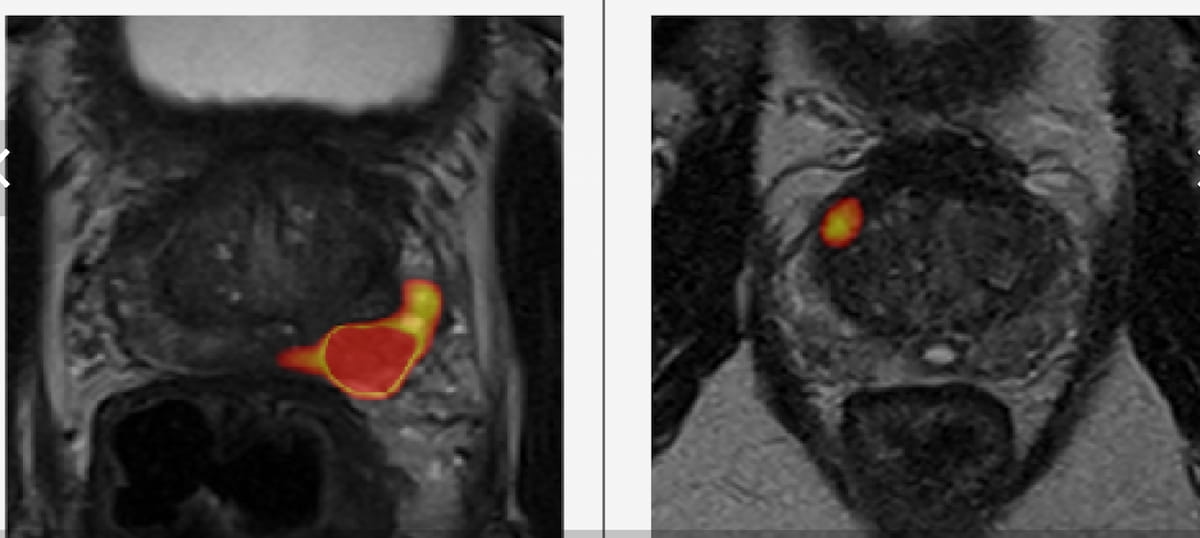Can Autonomous AI Help Reduce Prostate MRI Workloads Without Affecting Quality?
Based on findings from a multicenter study of over 1,600 patients, researchers at the European Congress of Radiology suggest the inclusion of autonomous artificial intelligence (AI) triage could facilitate up to a 75 percent reduction in prostate MRI reading workload.
The use of an autonomous artificial intelligence (AI) model for clinically significant prostate cancer (csPCa) detection on magnetic resonance imaging (MRI) demonstrated better accuracy than radiologist readers at three different centers, a finding that could significantly alleviate increasing prostate MRI worklist volume, according to research presented recently at the European Congress of Radiology.
For the study, which involved a total of 1,612 patients from three different facilities, researchers utilized AI as a first reader of prostate MRI scans with a subsequent certainty score determining the next step in the detection pathway. The study authors noted that findings on MRI with high certainty for clinically significant prostate cancer (csPCa) did not proceed to the radiologist worklist whereas cases of “uncertain” findings on MRI were triaged for radiologist review.
The researchers employed a non-inferiority specificity margin of -0.05 to calculate accuracy with the AI assistance pathway whereas radiologist accuracy was determined by comparing their PI-RADS 4 and higher assessments with biopsy findings.
Here one can see images revealing a more certain diagnosis of prostate cancer (left) and a less certain case on the right. Researchers at the European Congress of Radiology suggested that using an artificial intelligence (AI) model as an initial reader for prostate MRI scans may help alleviate imaging workload volume and allow radiologists to spend more time on challenging cases. (Images courtesy of the European Congress of Radiology.)

At the first center, involving 689 patients, researchers noted 70 percent accuracy with AI assistance vs. 65 percent with radiologist-only reading. In a cohort of 723 patients at the second facility, the study authors noted a 13 percent higher accuracy with AI assistance (75 percent vs. 62 percent), and nearly equivalent accuracy (85 percent vs. 83 percent) at a third center with 200 patients.
“The AI-supported PCa detection pathway provided a more efficient diagnosis compared to the radiologist-only pathway while maintaining a similar accuracy and non-inferior specificity,” wrote lead study author Stefan J. Fransen, MSc, who is affiliated with the Department of Radiology at University Medical Center Groningen in Groningen, Netherlands, and colleagues.
Given workforce shortages in the field and increasing imaging volume, the researchers said the utility of AI could have a significant impact in reserving the more complex diagnostic cases for radiologist review.
“This study shows the feasibility of using uncertainty to triage PCa suspicious patients to AI reading or (radiologist) assessment,” added Fransen and colleagues. “Based on our findings, AI-supported uncertainty-based diagnosis could reduce the radiologist workload by 50% to 75% without losing diagnostic accuracy.”
The researchers cautioned that subsequent prospective studies are necessary to provide more clarity on AI performance and the impact upon radiologist workloads.
Reference
1. Fransen S, Bosma J, van Lohuizen Q, et al. A multi-center validation of prediction uncertainty to select patients for prostate cancer AI diagnosis. Presented at the European Congress of Radiology, February 28-March 3, 2024, Vienna, Austria. https://www.myesr.org/congress/
Newsletter
Stay at the forefront of radiology with the Diagnostic Imaging newsletter, delivering the latest news, clinical insights, and imaging advancements for today’s radiologists.
Stroke MRI Study Assesses Impact of Motion Artifacts Upon AI and Radiologist Lesion Detection
July 16th 2025Noting a 7.4 percent incidence of motion artifacts on brain MRI scans for suspected stroke patients, the authors of a new study found that motion artifacts can reduce radiologist and AI accuracy for detecting hemorrhagic lesions.